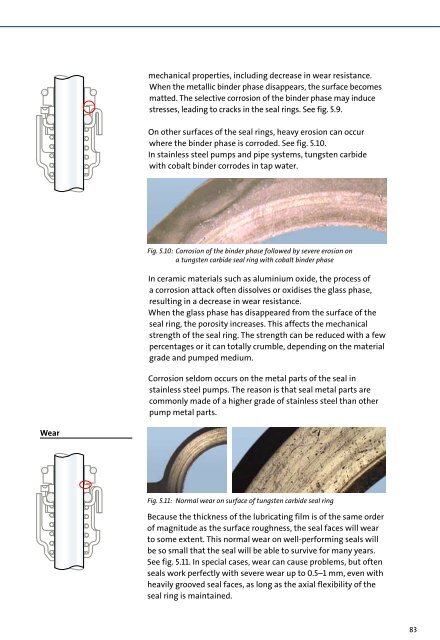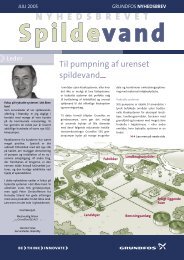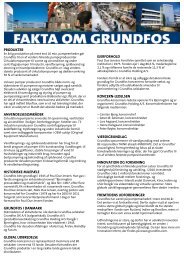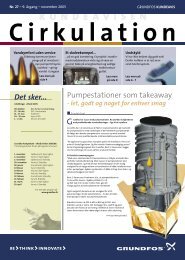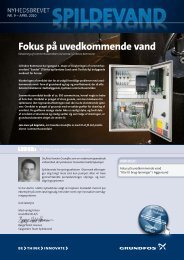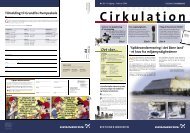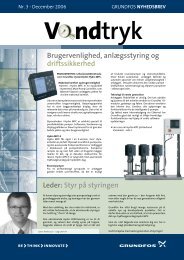Mechanical shaft seals for pumps - Grundfos
Mechanical shaft seals for pumps - Grundfos
Mechanical shaft seals for pumps - Grundfos
Create successful ePaper yourself
Turn your PDF publications into a flip-book with our unique Google optimized e-Paper software.
Wear<br />
mechanical properties, including decrease in wear resistance.<br />
When the metallic binder phase disappears, the surface becomes<br />
matted. The selective corrosion of the binder phase may induce<br />
stresses, leading to cracks in the seal rings. See fig. 5.9.<br />
On other surfaces of the seal rings, heavy erosion can occur<br />
where the binder phase is corroded. See fig. 5.10.<br />
In stainless steel <strong>pumps</strong> and pipe systems, tungsten carbide<br />
with cobalt binder corrodes in tap water.<br />
Fig. 5.10: Corrosion of the binder phase followed by severe erosion on<br />
a tungsten carbide seal ring with cobalt binder phase<br />
In ceramic materials such as aluminium oxide, the process of<br />
a corrosion attack often dissolves or oxidises the glass phase,<br />
resulting in a decrease in wear resistance.<br />
When the glass phase has disappeared from the surface of the<br />
seal ring, the porosity increases. This affects the mechanical<br />
strength of the seal ring. The strength can be reduced with a few<br />
percentages or it can totally crumble, depending on the material<br />
grade and pumped medium.<br />
Corrosion seldom occurs on the metal parts of the seal in<br />
stainless steel <strong>pumps</strong>. The reason is that seal metal parts are<br />
commonly made of a higher grade of stainless steel than other<br />
pump metal parts.<br />
Fig. 5.11: Normal wear on surface of tungsten carbide seal ring<br />
Because the thickness of the lubricating film is of the same order<br />
of magnitude as the surface roughness, the seal faces will wear<br />
to some extent. This normal wear on well-per<strong>for</strong>ming <strong>seals</strong> will<br />
be so small that the seal will be able to survive <strong>for</strong> many years.<br />
See fig. 5.11. In special cases, wear can cause problems, but often<br />
<strong>seals</strong> work perfectly with severe wear up to 0.5–1 mm, even with<br />
heavily grooved seal faces, as long as the axial flexibility of the<br />
seal ring is maintained.<br />
83


